Understanding Cockroach Bites and Their Risks
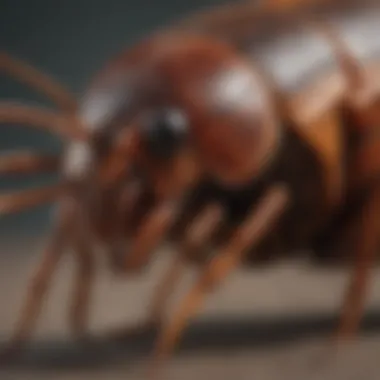
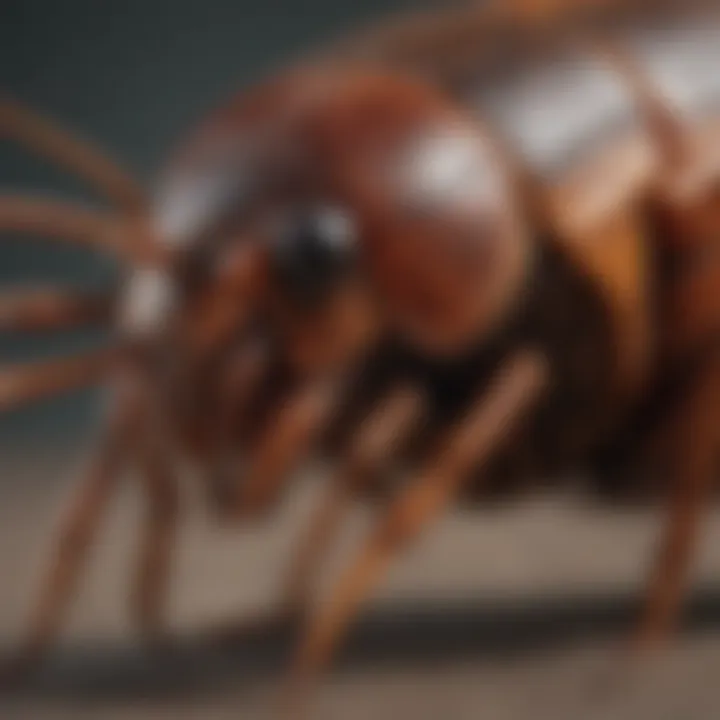
Intro
Cockroaches are often viewed as mere nuisances, but their potential to bite humans deserves deeper examination. While their bites are rare, understanding the anatomy, behavior, and circumstances surrounding cockroach encounters can shed light on real health risks. This knowledge is vital for housewives and homeowners who wish to maintain a clean and safe living environment while mitigating any associated fears.
In this article, we will explore how these pests identify themselves, the importance of preventative measures, and treatment options available should a bite occur. By the end of this discourse, readers will gain insights into managing cockroach threats more effectively.
Pest Identification
To effectively mitigate the risks posed by cockroaches, it is essential to accurately identify these pests. Cockroaches are typically characterized by their elongated bodies and long antennae. The most common species found in households include the German cockroach, American cockroach, and Oriental cockroach.
- German Cockroach: Small, about half an inch long, with light brown color and two dark stripes running from the head to the wings. They are agile and prefer warm, humid areas like kitchens and bathrooms.
- American Cockroach: Larger, up to two inches long, reddish-brown, with yellowish edges on the thorax. They often inhabit dark and moist areas like basements or sewers.
- Oriental Cockroach: About one inch long, shiny black, and prefers cooler conditions. Often found in basements or under sinks.
Signs and Symptoms of Infestations
Knowing the signs of a cockroach infestation can prevent the escalation of the problem. Look for:
- Droppings: Small, dark, and cylindrical pellets found in areas where food is stored.
- Egg Cases: Brown or black, oval-shaped egg cases often hidden in cabinets or behind appliances.
- Unusual Odors: A musty smell can indicate high levels of cockroach activity.
"Understanding the presence of these pests is critical for preventing potential health threats connected with cockroach bites."
Prevention Strategies
Preventing cockroach bites begins with effective home maintenance. Employing comprehensive strategies can significantly reduce the chances of an infestation.
Home Maintenance Tips for Pest Prevention
- Keep kitchen surfaces clean and free of crumbs.
- Seal cracks and crevices in walls and around windows.
- Store food in airtight containers.
- Dispose of garbage regularly and use tightly sealed trash bins.
Natural Deterrents and Barriers
Several natural deterrents can help keep cockroaches at bay, including:
- Boric Acid: Sprinkle in areas prone to infestation. It's effective but should be kept away from pets and children.
- Essential Oils: Oils like peppermint and tea tree can repel cockroaches when diluted and sprayed.
Treatment Options
Despite the best prevention efforts, it is essential to be prepared for potential encounters with cockroaches.
Overview of Chemical vs. Natural Treatments
Chemical treatments include insecticides that are effective but may pose health risks if not applied correctly. Conversely, natural treatments tend to be safer but often require consistent application for effectiveness.
Step-by-Step Guides for DIY Treatments
- Boric Acid Treatment:
- Essential Oil Spray:
- Identify areas with cockroach activity (droppings, egg cases).
- Lightly dust boric acid in the identified areas.
- Keep pets and children away until it settles and can be cleaned up safely.
- Mix water with a few drops of essential oil in a spray bottle.
- Spray along entry points and commonly infested areas.
- Reapply weekly to maintain effectiveness.
Prolusion to Cockroaches
Cockroaches are creatures that often provoke strong reactions. Many people fear these insects, associating them with dirt and germs. However, understanding their presence is essential to manage not only the infestations but also the threats they may pose to human health. By exploring the biology, behavior, and environment of cockroaches, one can gear up against potential bites and broader risks.
It is vital to note that while cockroaches are not typically aggressive, certain circumstances can lead to bites. Hence, knowing about their attributes contributes significantly to household safety and hygiene. Awareness can help housewives and homeowners maintain their living spaces, understand potential pest scenarios better, and handle invasions more effectively, thereby reducing unwarranted fear.
Overview of Cockroach Species
There are over 4,500 species of cockroaches worldwide, but only a few tend to infest human dwellings. The German cockroach, the American cockroach, and the Oriental cockroach are among the most common types. Each species has unique habits and behaviors that contribute to their adaptability and resilience.
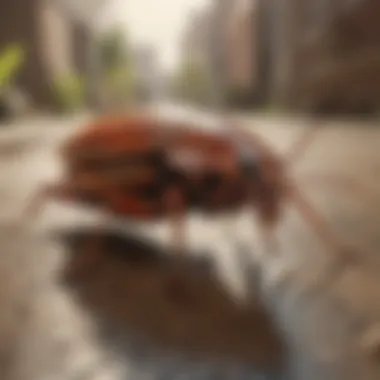
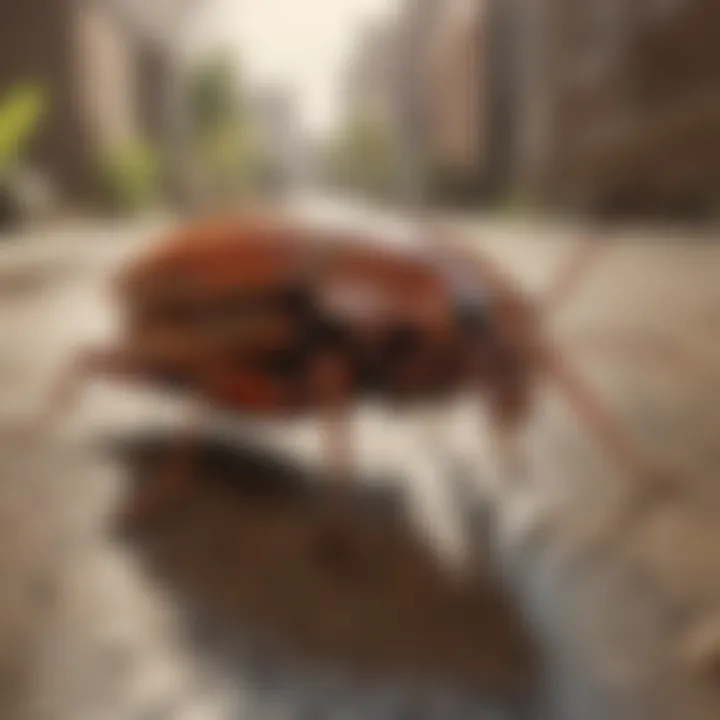
For example, the German cockroach thrives indoors, frequently found in kitchens and bathrooms. It reproduces quickly, especially in warm, humid environments. Conversely, the American cockroach often prefers warmer, outdoor settings but can invade inner spaces when searching for food. Each species has its own set of behaviors and habitats, making them important to understand when considering prevention strategies.
Habitat and Behavior
Cockroaches are exceptionally adaptable insects, which allows them to thrive in various environments. Common hiding spots include cracks, crevices, and kitchen cabinets. They prefer dark, warm, and moist areas to establish their colonies.
Their behavior is influenced by several factors, including temperature and available food sources. Cockroaches are nocturnal, meaning they are primarily active at night. This characteristic makes them difficult to spot.
Additionally, when faced with threats, such as disturbances or potential predators, cockroaches can be quite skittish, skittering away at impressive speeds. Such behavior may lead them to inadvertently come into contact with humans, and in rare cases, bite. Though not common, understanding these aspects helps in anticipating possible encounters and ensuring appropriate preventive measures.
Anatomy of Cockroaches
Understanding the anatomy of cockroaches is crucial in discussing their potential threat, particularly in relation to bites. Their mouthparts and feeding habits influence their interactions with humans. By grasping how they are built and how they feed, individuals can better comprehend the risks these insects pose. This knowledge can inform effective strategies for management and prevention in households.
Mouthparts Structure
Cockroaches are equipped with specialized mouthparts adapted for their scavenging lifestyle. Their mouthparts comprise several components, mainly mandibles, maxillae, and a labium. The mandibles act like jaws, grinding and tearing food into smaller pieces. This functionality allows cockroaches to consume a diverse range of organic materials, including decaying food and waste.
The maxillae assist in manipulating food and are equipped with sensory cells to aid in taste. The labium, acting as a lower lip, helps in holding the food in place during consumption. These structures work together to allow cockroaches to feed efficiently, which can lead to bites if they become agitated or feel threatened in proximity to humans.
"Understanding cockroach mouthpart structure is vital as it directly influences their feeding behavior and the potential for biting."
Feeding Habits
Cockroaches exhibit omnivorous feeding tendencies. They will consume a wide array of materials, which include food remnants, plant matter, and even paper products. Their feeding habits often lead them into contact with humans, especially in kitchens and living areas where food is present. During the hunt for food, cockroaches can inadvertently bite, particularly if they feel cornered or are disturbed.
They prefer dark, moist areas, which makes homes susceptible to their presence. Often, bites are the result of an accidental brush against a feeding cockroach. The bites are generally described as painless and may go unnoticed until irritation or allergic reaction occurs.
Can Cockroaches Bite?
Understanding whether cockroaches can bite humans is a crucial aspect of addressing their presence in our living spaces. While many people may find the notion of a cockroach biting them unsettling, it is essential to approach this topic with factual information. Cockroaches are pests that thrive in various environments, and their bite, while not common, can occur under specific circumstances. This section will explore the conditions under which cockroaches may resort to biting and the types of bites one may encounter.
Circumstances Favoring Bites
Cockroaches are primarily scavengers. They seek food, moisture, and shelter. Here are the main circumstances that could lead to cockroaches biting a human:
- Stress or Threat: If a cockroach feels threatened, it may bite. For example, if someone inadvertently gets too close or tries to squash it, the cockroach might bite as a defense mechanism.
- Limited Resources: In areas where food is scarce, cockroaches may be driven to bite humans, especially if their preferred food sources are unavailable. In historical accounts, there are reports of cockroaches biting sleeping individuals.
- Inhabitation: Cockroaches are more likely to bite in heavily infested homes where they have lost their natural fear of humans. They may wander into living spaces often, leading to increased chances for encounters.
By recognizing these scenarios, individuals can take steps to minimize the chances of a cockroach bite.
Types of Cockroach Bites
The types of bites caused by cockroaches can vary, although they are generally mild. Here are the main types:
- Superficial Bites: These bites usually cause minor conclusions on the skin. They often heal quickly and may not require medical attention.
- Allergic Reactions: Some individuals may react more severely to even a minor bite. This can cause redness, swelling, or itching around the bite area, indicating an allergic response.
- Infection Risk: Although rare, there is a potential for bites to become infected, especially if the wound is not cleaned properly. This possibility highlights the need for proper wound care following a bite.
"Understanding the circumstances and types of cockroach bites can assist in reducing fear and promoting safer living environments."
Ultimately, while the possibility of being bitten by a cockroach exists, it is not typical. Awareness of the factors leading to bites can empower individuals to manage their surroundings effectively.
Symptoms of Cockroach Bites
Understanding the symptoms of cockroach bites is crucial for both awareness and timely action. Recognizing these symptoms can help individuals differentiate between a cockroach bite and other skin irritations. Moreover, identifying such symptoms can guide swift measures to mitigate potential infections or allergic reactions. It is essential to know how the body may react after a cockroach bite, as this understanding can lead to more informed decisions regarding health care or pest control strategies.
Immediate Reactions
When a cockroach bites, the immediate reactions can vary from person to person. The initial signs often manifest as a localized area of redness, swelling, or itchiness at the site of the bite. In many cases, individuals might experience a sharp, stinging sensation, similar to that of a mosquito bite. Some people could also notice small puncture wounds caused by the cockroach's mouthparts.
In addition to physical symptoms, psychological responses may occur. The mere thought of a cockroach biting can induce anxiety in some individuals. In severe cases, an allergic reaction might ensue, characterized by hives and heightened itching across a broader area of skin. This reaction usually requires prompt medical attention to address the allergic response effectively.
"Immediate identification of symptoms helps in understanding the nature of the bite and aids in proper treatment."
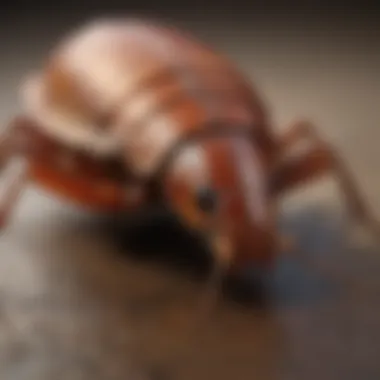
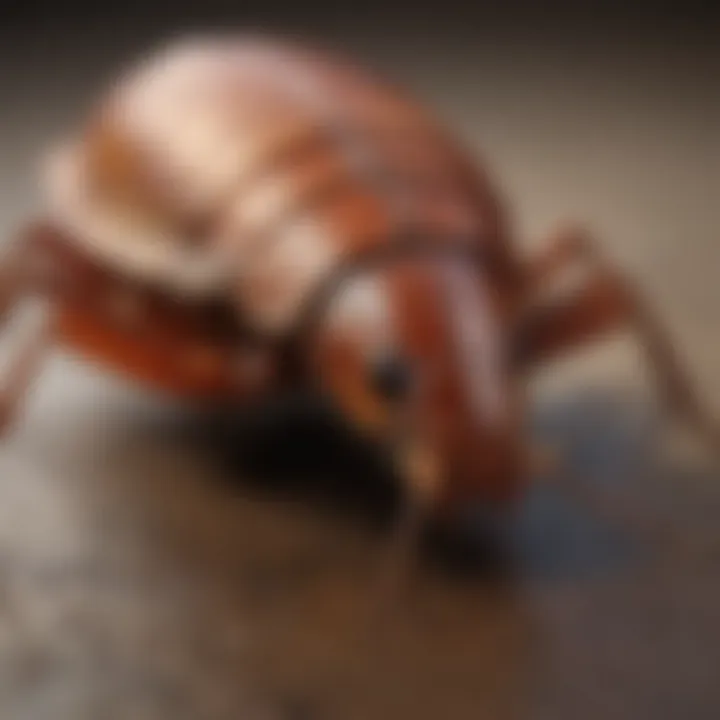
Long-Term Effects
Long-term effects from cockroach bites are often overlooked. However, persistent itching and inflammation can lead to chronic skin issues if not treated properly. Some individuals might develop skin infections due to prolonged scratching, which can introduce bacteria into the wounds. It is important to clean any bite wounds thoroughly to prevent infections.
Allergies stemming from cockroach bites can also have lasting repercussions. For instance, individuals with a history of severe allergies may find that subsequent encounters with cockroaches could exacerbate their existing conditions. In the worst-case scenario, these encounters might contribute to asthma developments or respiratory issues over time.
To summarize, recognizing symptoms of cockroach bites and understanding their potential long-term effects can empower individuals. This knowledge encourages proactive management and better control over living environments.
Health Risks Associated with Cockroach Bites
Understanding the health risks associated with cockroach bites is essential for homeowners and housewives. While many may not consider cockroaches a direct threat, their bites can lead to several health complications. This section explores the allergens produced by cockroaches, the potential for infections from their bites, and the implications for human health.
Prelude to Allergens
Cockroaches are not merely pests; they are also significant sources of allergens. These allergens primarily come from cockroach saliva, droppings, and body fragments. When cockroaches bite, they can introduce these allergens into the body, which may trigger allergic reactions. Symptoms can include sneezing, skin rashes, and more severe asthma attacks for sensitive individuals.
Allergens can linger in the environment, making prevention vital. Households should focus on thorough cleaning and maintenance to minimize allergen exposure. It is particularly important in homes with children or anyone with pre-existing respiratory conditions.
Key points about cockroach allergens:
- Source of allergies includes saliva, feces, and body parts.
- Allergic reactions can worsen existing conditions.
- Prevention through cleaning can mitigate risks.
Potential for Infections
The risk of infections from cockroach bites, while less discussed, is equally important. Cockroaches are known carriers of numerous bacteria, viruses, and parasites. When they bite, they can potentially transfer these pathogens into the human bloodstream.
Infections can manifest in various ways, ranging from mild skin irritations to more severe systemic infections. It is critical to manage any bite area properly, keeping it clean and monitoring for signs of infection like redness, swelling, or pus. Immediate medical attention may be necessary if the symptoms worsen.
Considerations regarding cockroach bites and infections:
- Cockroaches may carry harmful pathogens.
- Proper wound care is essential after a bite.
- Seek medical help for severe reactions or infections.
In summary, the health implications of cockroach bites can be serious. Allergic reactions and the potential for infections necessitate an understanding of how to address and prevent these risks effectively. Recognizing these threats can empower individuals to take appropriate action in maintaining a healthy living environment.
Prevention of Cockroach Infestation
Understanding how to prevent cockroach infestation is crucial for maintaining a safe and healthy living environment. Gross and unappealing, cockroaches are more than just an inconvenience; they potentially expose individuals to health risks through bites and the allergens they produce. Effective prevention strategies can minimize the hassle associated with these pests and protect the home, particularly for families with children or individuals sensitive to allergens.
Sanitation Practices
Sanitation is the first line of defense against cockroach infestations. Keeping a clean living space deters these pests. Here are some practices to consider:
- Keep food stored properly: Seal all food items in airtight containers. Leftover food should not sit out; it attracts cockroaches.
- Dispose of trash regularly: Ensure that garbage cans are tightly closed and emptied frequently. This minimizes potential food sources for cockroaches.
- Clean up spills and crumbs: Immediate clean-up reduces the chances of attracting cockroaches. Regular cleaning routines are essential.
- Avoid clutter: Limiting clutter allows easier cleaning and less hiding space for cockroaches. Consider evaluating belongings for unnecessary items.
Consistent sanitation not only helps in preventing infestations but also creates a healthier home environment overall.
Sealing Entry Points
Another vital strategy in prevention involves sealing entry points where cockroaches may gain access. Identify and block potential access routes. The following strategies may be beneficial:
- Inspect for gaps: Thoroughly check doors, windows, and walls for any cracks or holes. Even small openings can serve as entry points for cockroaches.
- Use weather stripping: Installing weather stripping on doors and windows will effectively guard against not only cockroaches but various insects.
- Seal pipes and ducts: Caulk any gaps around plumbing and ventilation systems. Cockroaches often enter through these areas.
- Close openings in the foundation: Inspect the foundation of the house and fill in cracks or holes with concrete or appropriate sealants. This barrier is essential to prevent entry.
By proactively sealing entry points, homeowners can create a more significant deterrent against cockroach invasions.
Use of Repellents
The use of repellents adds another layer of protection to prevent cockroach infestations. Different commercial and natural options exist that may effectively deter these pests:
- Chemical repellents: Many sprays and gel formulations are sold that specifically target cockroaches. It is important to follow the instructions closely and apply these products in areas where you suspect cockroach activity.
- Natural repellents: Some natural substances may deter cockroaches, such as diatomaceous earth or boric acid. Homeowners can apply these small amounts in places cockroaches are likely to travel.
- Essential oils: Certain scents, like peppermint or eucalyptus, can repel cockroaches. Blending these oils with water creates a spray that can be applied around the house.
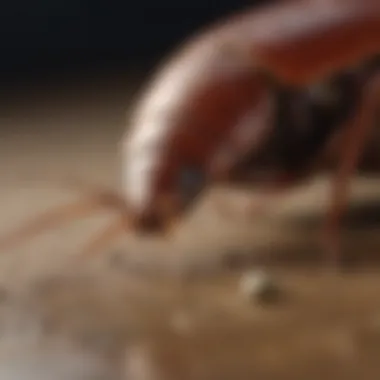
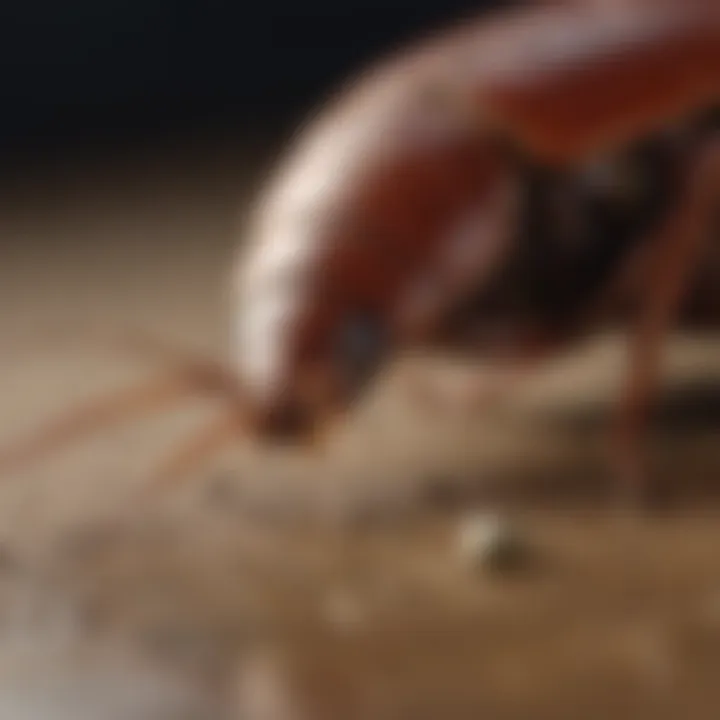
Choosing the right repellent requires understanding both the potential benefits and risks, especially in homes with pets or children. Overall, a combination of sanitation, sealing entry points, and the strategic use of repellents fosters a robust defense against cockroach infestations.
Effective Treatment Options for Infestations
Addressing cockroach infestations is essential for maintaining a healthy living environment. Effective treatment options can not only reduce the cockroach population but also have long-lasting effects on preventing their return. Understanding the various strategies available for dealing with these pests is crucial, especially for homeowners and housewives. This section will explore different treatment approaches, helping readers make informed decisions aligned with their specific contexts and preferences.
Chemical Solutions
Chemical solutions are often the first line of defense against cockroaches. These solutions typically come in the form of sprays, baits, and powders. It is important to choose products that are specifically designed to target cockroaches, as general insecticides may not be effective.
- Boric Acid: This is a popular choice for many homeowners. When ingested by cockroaches, boric acid dehydrates and ultimately kills them. It is essential to place this powder in areas where cockroaches are known to travel, such as behind appliances or along baseboards.
- Insecticidal Baits: These products are designed to attract cockroaches and deliver a lethal dose of poison. They are effective for reducing the insect population. However, it is crucial to follow the manufacturer's instructions to ensure safety and efficacy.
- Liquid Sprays: These can be used for immediate knockdown of visible cockroaches. They should be applied in areas where cockroaches are often seen, but caution is advised, particularly around children and pets. Always read labels carefully before use.
Using chemical solutions effectively requires understanding your home’s layout, including where cockroaches are most often found. Keeping a clean environment can enhance the effectiveness of these treatments.
Natural Remedies
Natural remedies are increasingly popular among those seeking eco-friendly options. While these might not provide results as quickly as chemical solutions, they can be effective in managing cockroach populations over time.
- Diatomaceous Earth: This powder is made from fossilized algae. When cockroaches come into contact with it, it damages their exoskeletons and leads to dehydration. It is important to use food-grade diatomaceous earth to ensure safety.
- Essential Oils: Oils such as peppermint or tea tree oil can deter cockroaches. Mixing these with water and applying them as a spray may help keep cockroaches away from treated areas.
- Soap and Water Solution: A simple mixture can suffocate cockroaches on contact. Spraying this solution directly on visible cockroaches stops them immediately. It is a safe and non-toxic option for households with pets and children.
Professional Pest Control Services
When infestations are severe, enlisting professional pest control services may be the best option. These experts bring specialized knowledge and access to advanced treatment methods. Here are some key benefits:
- Thorough Assessment: Professionals can identify the source of the infestation and suggest an integrated pest management plan.
- Effective Treatment: They have access to products and techniques that may not be available to the general public, helping to eliminate cockroaches more effectively.
- Long-Term Prevention: Many pest control companies provide follow-up services or recommendations for preventing future infestations, ensuring a comprehensive approach to pest management.
Engaging a professional service may seem like an additional expense, but it can save time and effort in the long run, providing peace of mind.
Common Myths About Cockroaches and Bites
The topic of common myths about cockroaches and their bites is crucial in dispelling fears and misconceptions that many people hold. A solid understanding of the realities surrounding these pests can help manage anxiety and promote effective responses to infestations. This section will examine prevalent myths surrounding cockroaches and their bites, aiming to clarify the facts and benefits of diminishing misinformation.
Cockroaches are often equated with disease and filth, primarily due to their habitat preferences. However, much of the worry surrounding them is exaggerated. Some believe that cockroaches are aggressive and will intentionally bite humans, while others think that bites are guaranteed to cause severe health issues.
Taking time to consider these myths can provide insight into the relationship between cockroaches and humans. Knowledge enables housewives and homeowners to implement better strategies for prevention and treatment. By understanding what is factual, individuals can set aside unnecessary fears and focus on practical solutions.
Debunking Misconceptions
Many myths about cockroaches and their bites can be broken down into a few categories. First, it is essential to address the myth that cockroaches are inclined to bite humans frequently. While they can bite in specific circumstances—such as when food is limited or during disturbances in their habitats—intentional biting is not a standard behavior.
Another misunderstanding is the belief that a cockroach bite will directly cause severe diseases. In reality, most bites lead to minor irritation similar to that caused by mosquito bites. Serious reactions are rare and often linked to allergies rather than the bite itself. Here are some additional misconceptions:
- Cockroaches bite only when provoked: This is relatively accurate. Cockroaches tend to avoid conflict and will bite primarily when feeling threatened or if there is no other food source available.
- All cockroach species can bite: Not all cockroach species possess the necessary mouthparts to bite humans effectively. Most common species, like the American cockroach or German cockroach, are not aggressive.
- Bites cause immediate illness: While some individuals may encounter allergic reactions, most cockroach bites do not produce immediate or severe symptoms.
- You can catch diseases directly from cockroach bites: This is largely unproven. While cockroaches can carry pathogens on their bodies, the bite itself is rarely the primary vector for disease transmission.
In summary, understanding these common myths leads to better management of cockroach encounters.
Through education, individuals can liberate themselves from excessive fears and adopt practical pest control methodologies. This approach not only aids in responding to the immediate presence of cockroaches but also fosters a healthier living environment.
Culmination: The Significance of Understanding Cockroach Behavior
Understanding cockroach behavior is crucial for several reasons. First, it helps in recognizing the likelihood of encounters with these pests. Cockroaches are adaptive creatures that can thrive in numerous environments. Knowing their habits enables homeowners to take proactive measures in reducing their presence.
Furthermore, not all cockroaches pose the same level of risk. Some species are more likely to bite than others. For example, the German cockroach tends to invade homes more frequently. It is less aggressive towards humans, while other types may show more tendency to bite under stressful conditions. Hence, having knowledge about specific cockroach species contributes to better awareness.
Awareness around health risks is another critical aspect. Cockroach bites can cause allergic reactions or infections. Identifying and understanding these potential threats elevates the importance of immediate response and treatment. Moreover, understanding their behavior aids in developing effective prevention strategies.
Simple sanitation practices, sealing cracks, and using repellents can deter cockroach infestations significantly. This information is vital, especially for housewives and homeowners who may feel overwhelmed by pest control challenges.
By learning about cockroach behaviors, individuals can create an environment that is less inviting for them. Ultimately, understanding these creatures is not about fear but about empowerment. Knowledge enables better control over living spaces, leading to healthier homes and reduced anxiety about pests.
"Knowledge empowers us to make informed decisions in pest management."
Key Takeaways
- Bite Awareness: Recognize the conditions under which cockroaches are likely to bite.
- Species Identification: Understand the different cockroach species to better assess their behavior and risk levels.
- Sanitation Practices: Maintain cleanliness to deter infestations.
- Effective Prevention: Implement sealing, repellents, and other measures to minimize encounters.
- Prompt Response: Learn symptoms and treatment options for bites to address health concerns promptly.



